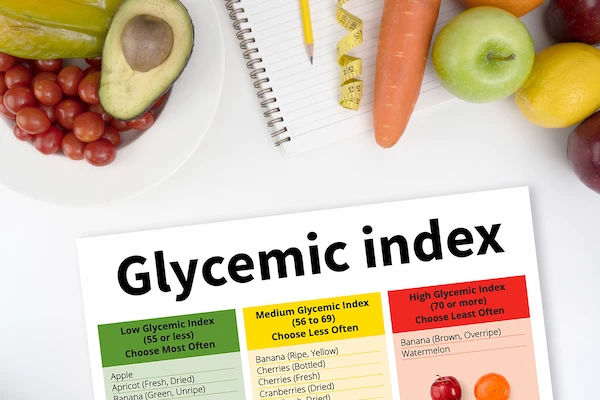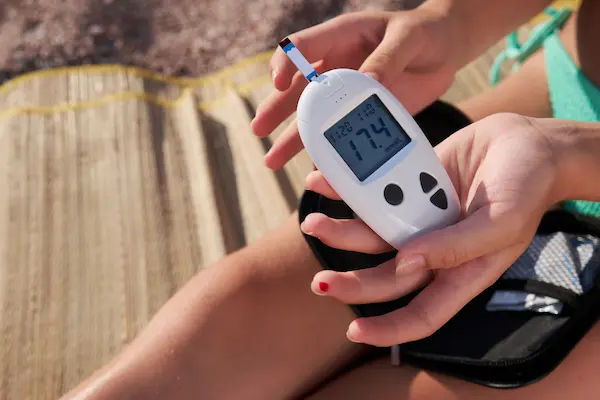Managing Type 2 Diabetes: A Complete Diet Guide
Learn how to manage Type 2 diabetes with a balanced diet, practical meal tips, and nutrition strategies for better blood sugar control.


Introduction
Living with Type 2 diabetes can feel overwhelming, especially when it comes to figuring out what to eat. You’re bombarded with information, often contradictory, leaving you confused about the best path forward. But here’s the empowering truth: food is one of your most powerful tools for managing your condition. This comprehensive guide is designed to cut through the noise and provide you with a clear, actionable roadmap for healthy eating with Type 2 diabetes. We’ll move beyond simple "do's and don'ts" and delve into the why behind dietary choices, empowering you to make informed decisions that support stable blood sugar, boost your energy, and reduce the risk of complications. Think of this not as a restrictive diet, but as a sustainable, enjoyable way of eating that puts you back in control of your health.
Understanding Type 2 Diabetes: The Basics
Type 2 diabetes is a chronic condition that affects how your body processes glucose (sugar), its primary source of energy. When you eat, carbohydrates are broken down into glucose and released into your bloodstream. In response, your pancreas should produce insulin, a hormone that acts like a key, allowing glucose to enter your cells to be used for energy.
What is Insulin Resistance?
In Type 2 diabetes, this system doesn't work correctly. Your body's cells become resistant to the effects of insulin. Imagine the locks on your cells becoming rusty. The key (insulin) doesn't work as well, so glucose struggles to get in and builds up in the bloodstream, a state known as hyperglycaemia. To compensate, your pancreas works overtime to produce more insulin. Over time, this can exhaust the pancreas, leading to declining insulin production.
The Critical Role of Blood Sugar Management
Consistently high blood sugar levels are toxic to your body's tissues and can lead to serious long-term complications, including nerve damage (neuropathy), kidney disease (nephropathy), eye damage (retinopathy), and an increased risk of heart disease and stroke. Therefore, the primary goal of diabetes management through diet is to prevent sharp spikes and dips in blood glucose, keeping your levels within a healthy target range.
The Core Principles of a Diabetes-Friendly Diet
A successful diet for Type 2 diabetes isn't about deprivation; it's about balance, timing, and making smart swaps. It’s a sustainable approach to diabetic meal planning that focuses on nutrient-dense foods.
The Plate Method: Your Visual Guide to Portions
One of the simplest and most effective tools is the Diabetes Plate Method, endorsed by the American Diabetes Association. It provides a visual guide to create perfectly portioned, balanced meals without any measuring cups:
1. Fill half your plate with non-starchy vegetables (e.g., spinach, broccoli, bell peppers, cauliflower).
2. Fill one-quarter of your plate with lean protein (e.g., grilled chicken, fish, tofu, lentils).
3. Fill the remaining quarter with quality carbohydrates, preferably whole grains or starchy vegetables (e.g., quinoa, brown rice, sweet potato).
4. Add a side of a healthy fat and a serving of low-glycaemic fruit.
Carbohydrates: Choosing the Right Kind
Carbohydrates have the most immediate impact on blood sugar, but they are not the enemy. The key is to choose complex carbs that are high in fibre. Fibre slows down digestion and the absorption of sugar, preventing those dreaded spikes. Swap refined carbs (white bread, white rice, sugary cereals) for whole grains (oats, barley, whole-wheat pasta), legumes, and non-starchy vegetables.
The Power of Fibre and Lean Protein
Both fibre and protein are your allies in blood sugar control. As mentioned, fibre moderates digestion. Protein promotes satiety (feeling full) and has a minimal impact on blood glucose. Including a source of lean protein like chicken breast, fish, eggs, Greek yoghurt, or beans in every meal and snack helps maintain steady energy levels.
Fats: Focusing on the Healthy Ones
Healthy fats are crucial for heart health, which is especially important for people with diabetes. Focus on unsaturated fats from sources like avocados, nuts, seeds, and olive oil. Limit unhealthy saturated fats (found in red meat and full-fat dairy) and avoid trans fats (found in processed snacks and fried foods), as they can increase insulin resistance and cholesterol levels.
Consult a Dietitian for the best advice
Building Your Diabetes Food List: What to Eat
Stocking your kitchen with the right foods sets you up for success. Here’s a breakdown of what to prioritise.
Best Non-Starchy Vegetables
Load up on these! They are low in calories and carbs but high in vitamins, minerals, and fibre.
Leafy greens (spinach, kale, lettuce)
Broccoli, cauliflower, Brussels sprouts
Bell peppers, mushrooms, onions
Cucumbers, celery, zucchini
Smart Carbohydrate Choices
Choose these complex, fibre-rich carbs over their refined counterparts.
Whole Grains for Sustained Energy: Quinoa, barley, bulgur, oats, whole-wheat bread, and brown rice.
Low-Glycaemic Index Fruits: Berries (blueberries, strawberries), apples, pears, oranges, and cherries. Enjoy in moderation.
Lean Protein Sources
Plant-based: Lentils, chickpeas, black beans, tofu, tempeh.
Poultry and Fish: Skinless chicken, turkey, salmon, tuna, cod.
Other: Eggs, low-fat Greek yoghurt, cottage cheese.
Healthy Fats to Include
Avocado, olives, nuts (almonds, walnuts), seeds (chia, flaxseed), and olive oil.
Foods to Limit or Avoid for Stable Blood Sugar
While no food is completely off-limits, certain items can significantly disrupt blood sugar control and should be consumed rarely:
Sugar-Sweetened Beverages: Sodas, fruit juices, sweet teas, and energy drinks.
Refined Grains: White bread, white rice, pastries, and regular pasta.
Highly Processed Snacks: Cookies, chips, crackers, and candy.
Fried Foods: French fries, fried chicken, and doughnuts.
Foods High in Saturated and Trans Fats: Fatty cuts of red meat, processed meats (sausage, bacon), and butter.
Beyond Food: Essential Lifestyle Factors
Diet is paramount, but it works best as part of a holistic approach.
The Importance of Regular Physical Activity
Exercise acts like natural insulin, helping your muscles use glucose for energy without needing as much insulin. Aim for at least 150 minutes of moderate-intensity exercise (like brisk walking, cycling, or swimming) per week, combined with strength training twice a week.
Stress Management and Quality Sleep
Chronic stress and poor sleep can raise cortisol levels, which can increase blood sugar. Practices like meditation, deep breathing, and ensuring 7-9 hours of quality sleep per night are vital components of managing type 2 diabetes naturally.
Sample Meal Plan for a Day
Breakfast: Veggie omelet (2 eggs with spinach, mushrooms, onions) with a side of 1/2 cup berries.
Lunch: Large salad with grilled chicken breast, mixed greens, cucumbers, bell peppers, and a quinoa sprinkle, dressed with olive oil and vinegar.
Snack: An apple with a tablespoon of almond butter.
Dinner: Baked salmon with a side of roasted asparagus and 1/3 cup of brown rice.
Conclusion: A Sustainable Journey to Better Health
Managing Type 2 diabetes through diet is not about short-term restrictions; it's about embracing a long-term, nourishing lifestyle. This comprehensive guide provides the foundation, but your journey is unique. Listen to your body, monitor your blood sugar to see how different foods affect you, and don't be afraid to experiment with new recipes and flavors. Remember, you have the power to significantly influence your health outcomes. Every healthy meal is a positive step toward greater energy, improved well-being, and a reduced risk of complications. If your blood sugar levels remain consistently high despite these dietary changes, it is crucial to seek professional guidance.
Consult a Dietitian for the best advice
Consult a Dietitian for the best advice

Ms. Sushma Jaiswal
Dietician
42 Years • M.Sc.(Food & Nutrition)
Bengaluru
Swasthya Nutrition, Bengaluru

Ms Malabika Datta
Dietician
19 Years • Bsc (Clinical Nutrition & Dietetics), Msc (Dietetics & Food Service Management)
Kolkata
Malabika’s Diet Clinic, Kolkata

Neelanjana J
clinical nutrition
3 Years • Bsc., Msc. Nutrition and Dietetics.
Bengaluru
Apollo Clinic, JP nagar, Bengaluru

Dr Darshana R
General Physician/ Internal Medicine Specialist
15 Years • MBBS, MD, DNB (Internal Medicine), Diploma in Allergy, Asthma and Immunology , Fellowship in Diabetes
Bengaluru
Apollo Clinic, JP nagar, Bengaluru
Ms Chetu Singhi
Dietician
20 Years • MSC Dietetics & Nutrition
Kolkata
RB Diagnostic - Dietician Diet2fit Chetu Singhi, Kolkata


